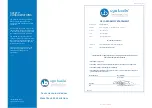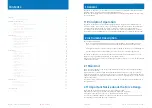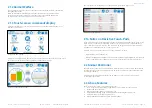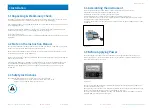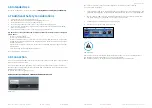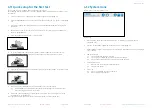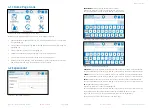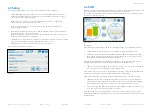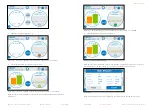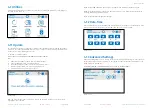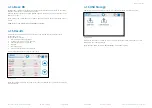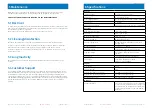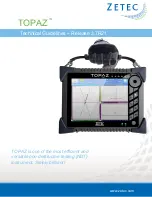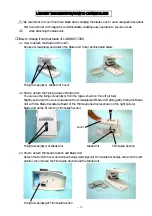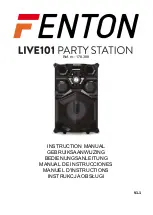
Page: 8
< Librae instruction manual
2 Instrument Description
2 Instrument Description
Librae instruction manual >
Page: 9
2.1.2 Animal Welfare
In any analgesia test, great care must be taken to prevent the animal from experiencing
any inadvertent harm.
When an investigator initially begins using the incapacitance test, and when first
assessing a new strain of animal, care must be taken to identify the appropriate
amount of stimulus that will produce the desired response.
2.1.3 Touch-screen command/display
Librae incorporates a 4.3” touch-screen display, for basic setting and monitoring, via an
intuitive control panel.
Figure 2.1.3.1, “Main Menu”
During the test (Figure 2.1.3.2), the touch-screen display indicates the actual force applied on
each foot pad, the duration of the experiment and the function mode.
Figure 2.1.3.2, Measurement page
The test results, can be browsed in a condensed view, as shown in Figure 2.1.3.3.
Figure 2.1.3.3, “Results Page”
2.1.4 Notes on Resistive Touch-Pads
If you compare the touch sensitivity of your tablet or smart-phone with the Librae touch-screen,
you may notice a different, less sensitive response. You may need to press slightly harder, or
use a stylus pen on the touch screen. This is because we employ a
resistive
touch-screen dis-
play (while most smart phones use a
capacitive
screen).
Resistive screens are a better choice for our application due to their:
• High resistance to dust and water
• Ability to work with gloved hands or stylus (unlike capacitive technology which is dependent
on the conductive nature of human body and doesn’t work if the user is wearing gloves).
2.2 Animal Restrainer
The animals are confined by a clear removable restrainer made of clear Perspex. Two different
versions (mouse and rat) are available. The top lid helps easy removal of the animal when the
experiment is finished.
Restrainers with custom measurements can be made on request. Please send an email
2.3 Librae Features
The main features of Librae Incapacitance Tester are:
1. Force range: from 20g to 2200g per paw, with a 0.1g resolution over the full scale
2. Manual and Autostart mode
3. Detection by pedal switch of elapsed time-out
4. Visualization averaging for smooth reading without affecting the sample rate
5. Histogram and Scroll Graph of applied force.
6. Data portability via USB memory card (.CSV file format)


